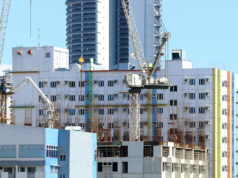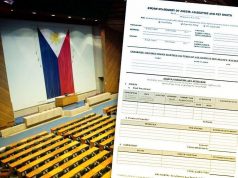Diokno sees economy returning to pre-COVID standing by 2022
THE PHILIPPINE economy might take two years to return to its pre-pandemic level, Bangko Sentral ng Pilipinas Governor (BSP) Benjamin E. Diokno said on Thursday.
Third-quarter gross domestic product (GDP) data set to be released next week by the Philippine Statistics Authority will be “much better” than the record 16.5% contraction in the second quarter, Mr. Diokno said in a briefing.
“We expect the economy to bounce back by 6.5-7.5% (in 2021) but that means we have not yet fully recovered. [There will be] recovery next year but we will be back to our 2019 GDP by 2022,” he said.
At the same time, the International Monetary Fund (IMF) said it is seeing early signs of improvement in Asia-Pacific economies, but expressed concern as some countries, including the Philippines, are still facing challenges in curbing the rise in coronavirus disease 2019 (COVID-19) infections.
“We see patches of green shoots, but recovery is by no means entrenched… It is still alarming to see these countries — India, Philippines, Indonesia, and also Nepal are still seeing some increase [of cases] in this pandemic,” Chikahisa Sumi, director of the IMF’s Regional Office for Asia and the Pacific, said in a briefing on Thursday.
Economies in Asia and the Pacific will have “varying speed of recovery,” depending on the extent of the pandemic’s impact, he said.
The IMF projects the Philippine economy will shrink by 8.3% this year, a more pessimistic outlook than the 4.5% to 6.6% contraction estimate by the government. It expects the Philippines to grow by 7.4% in 2021.
The Health department on Thursday reported 1,594 new cases, bringing the total to 389,725, while the death toll stood at 7,409. The Philippines has the second highest number of COVID-19 cases and deaths in Southeast Asia after Indonesia.
The pandemic has battered economies in the region, as seen with the rise in job losses and decline in remittances.
“Remittances have been very hard hit because the immigrant workers in, say, US and advanced economies, because the activities have been shrinking — many of them have lost jobs or they have come back home. Those have a very big impact to Asian countries’ current accounts,” Mr. Sumi said.
In the Philippines, remittance inflows declined 2.6% year on year to $19.285 billion in the first eight months of 2020. The BSP expects cash remittances to drop by 2% this year due to the impact of the pandemic.
Meanwhile, the current account — which includes economic interactions such as trade in goods and services, remittances from migrant Filipino workers, profit from Philippine investments overseas, interest payments to foreign creditors, and grants from abroad — stood at a surplus of $4.4 billion in the first half of the year, as imports slumped.
As the pandemic drags on, Mr. Sumi said emerging economies are faced with a smaller fiscal space compared with advanced economies in Asia.
“What they [emerging markets] can do using the expenditure and tax relief is somewhat limited to 4% of GDP,” Mr. Sumi said. In comparison, advanced Asian economies spent about 25% of their GDP on average for expenditures and policies for the pandemic response.
Based on the IMF’s policy tracker, fiscal response in the Philippines reached P595.6 billion, or about 3.1% of the GDP. Signed into law in September, Republic Act No. 6953 or Bayanihan to Recover as One Act allocated an additional P165 billion, equivalent to about 0.8% of the GDP, for the pandemic response.
Mr. Sumi said fiscal measures should be geared towards ensuring the healthcare system remains intact and the virus is contained.
“It’s not a trade-off. The economy cannot start unless the health condition is under control,” he said. — Luz Wendy T. Noble



